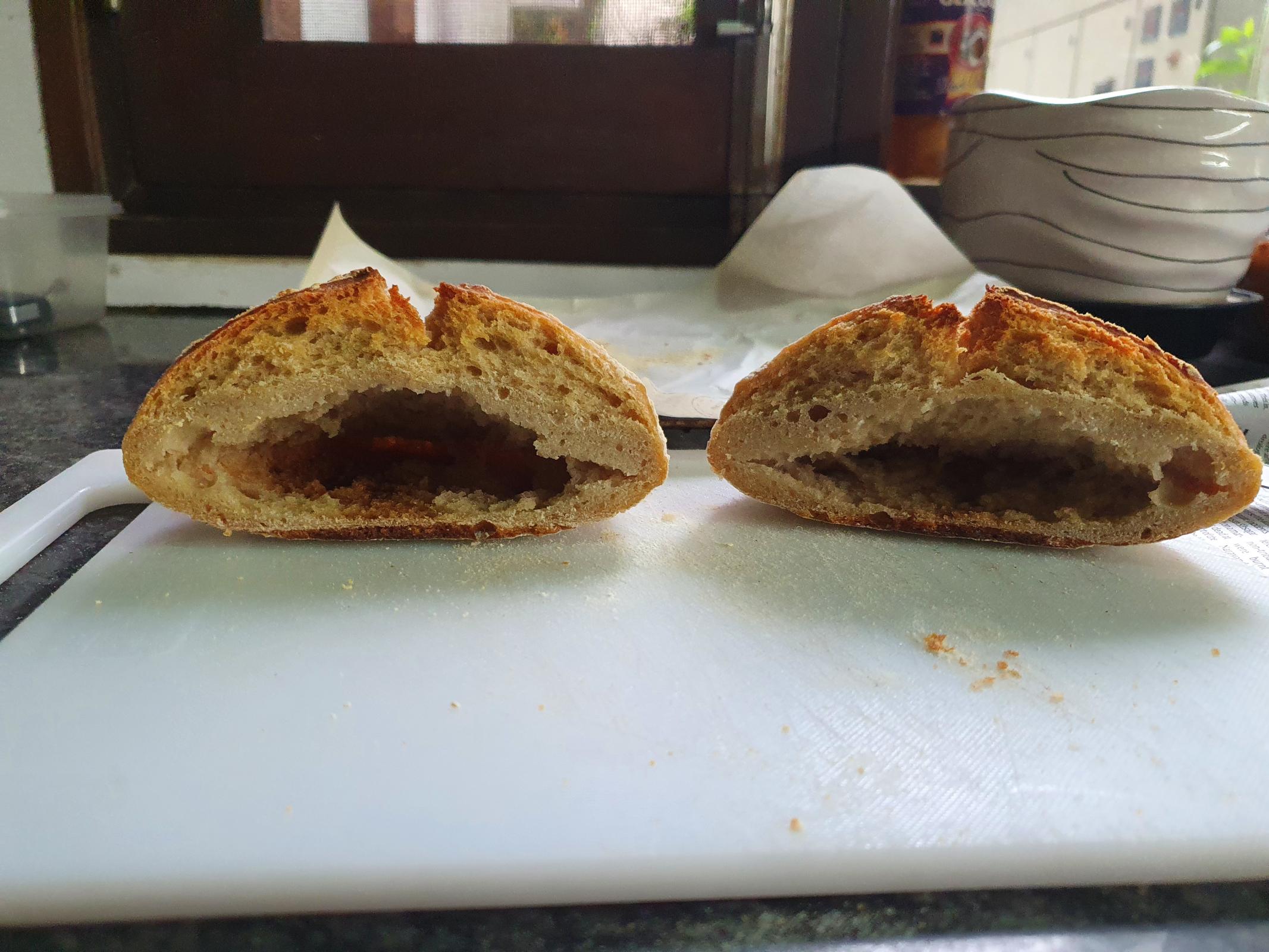Dear all,
I've been reading up to try and understand the behavior of my starter, but I'm still largely confused, especially given the large number of different feeding routines and ratios.
So if you can, please indulge me in this story for a second and point out what I'm missing/got wrong.
When flour and water are mixed they will collect bacteria along the way from the environment (or things added to the mix like pineapple juice of fruit skins) and start to build yeasts and lactobacillus. In the process CO2 will be produced, a tangy taste will be developed and another bunch of chemical processes will happen, but the CO2 and the taste are what I am, maybe ignorantly, most concerned about.
Most schedules to create a starter I've seen involve the same 3 steps:
- add flour + water, stir
- some time later, often 24hrs, take some out and add more flour/water
I really disliked all the throwing away and I couldn't bear to also work out baking discards, so I didn't do anything until I found someone who simply added 20g/20g FW every day for 7 days or so and, surprise surprise, in a week I got a starter going that would double in ~6hrs.
Already there I was pretty confused: why is the entire world throwing away all that flour when just adding a little bit a a time works just fine?
One thought is that maybe that starter wasn't so great and that was partly the reason of a my not so great raising, but that's for another post.
And what's up with this magical 24hrs?
Then it comes to maintenance/feeding schedule: in principle the idea is very simple I know, those bacterias become hungry once they're done eating all the flour and need more or they'll starve. But why are we sometimes feeding it 1:1:1 ratio rather than 1:5:5? or 1:2:2? what's the point of different proportions?
Is more flour going to last longer slowing the raise period? This makes no sense if doubling is the point, because if the yeast ate even half of it, or its equal in weight, it would cause probably enough raise to look doubled. Or is it that since there's more flour more bacteria are attracted into the mix because of the surplus, making the starter stronger?
To make matter more complicated there's also the idea of mixing an already raised starter for a second raise. Yeast being stationary it may not be able to reach all the flour that was added, especially if the ratio was some crazy 1:10:10, and indeed I got an incredible 2nd raise when I did this myself. Is this indeed making my culture stronger since I don't dilute the mix with more flour/water and if so why isn't it a basic step in all those feeding schedules or even levain build-up processes?
And when it comes to strength, why isn't a crazy ration such as 1:10:10 just gonna dilute the starter and make it weak?
thank you so much if you got all the way here I look forward to your insights and be a little less ignorant about sourdough starter.

























